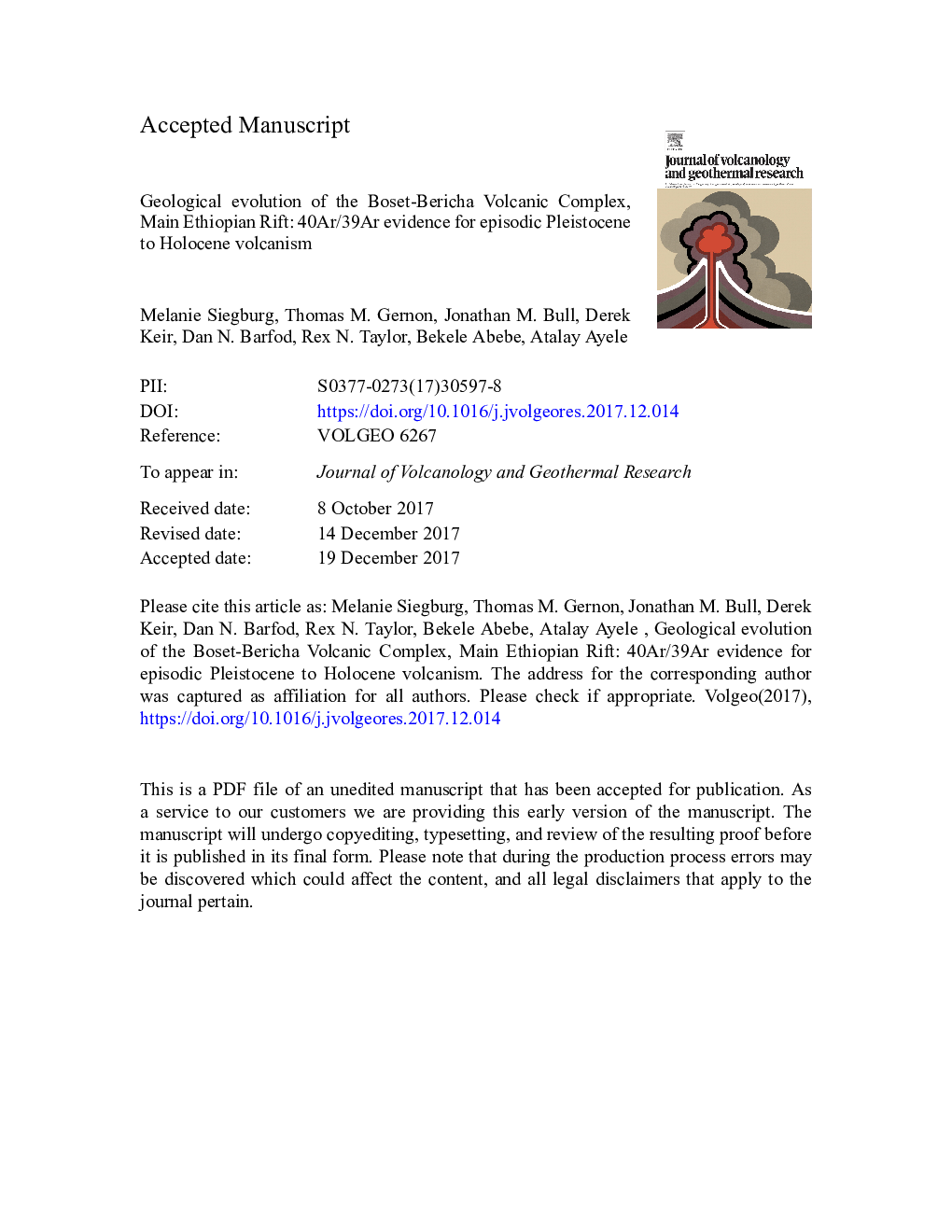| Article ID | Journal | Published Year | Pages | File Type |
|---|---|---|---|---|
| 8911403 | Journal of Volcanology and Geothermal Research | 2018 | 46 Pages |
Abstract
The Boset-Bericha Volcanic Complex (BBVC) is one of the largest stratovolcanoes of the northern Main Ethiopian Rift (MER). However, very little is known about its eruptive history, despite the fact that approximately 4 million people live within 100Â km of the complex. Here, we combine field observations, morphometric analysis using high-resolution LiDAR data, geochemistry and 40Ar/39Ar geochronology to report the first detailed account of the geological evolution of the BBVC, with a focus on extensive young lava flows covering the two edifices, Gudda and Bericha. These lavas exhibit a bimodal composition ranging dominantly from basaltic rift floor lavas and scoria cones, to pantelleritic trachytes and rhyolite flows at Gudda, and comenditic rhyolites at Bericha. Further, several intermediate compositions are associated with fissure vents along the Boset-Kone segment that also appear to link the silicic centres. We divide the BBVC broadly into four main eruptive stages, comprising: (1) early rift floor emplacement, (2) formation of Gudda Volcano within two main cycles, separated by caldera formation, (3) formation of the Bericha Volcano, and (4) sporadic fissure eruptions. Our new 40Ar/39Ar geochronology, targeting a representative array of these flows, provides evidence for episodic activity at the BBVC from ~Â 120Â ka to the present-day. We find that low-volume mafic episodes are more frequent (~Â 10Â ka cyclicity) than felsic episodes (~Â 100Â ka cyclicity), but the latter are more voluminous. Over the last ~Â 30Â ka, mafic to intermediate fissure activity might have reinvigorated felsic activity (over the last ~Â 16Â ka), manifested as peralkaline lava flows and pyroclastic deposits at Gudda and Bericha. Felsic episodes have on average a higher eruption rate (2-5/1000Â years) and productivity at Gudda compared to Bericha (1-2/1000Â years). The young age of lavas and current fumarolic activity along the fault system, suggest that the BBVC is still potentially active. Coincident episodic activity within the BBVC and at several rift segments in the MER is observed, and facilitates continental rifting.
Related Topics
Physical Sciences and Engineering
Earth and Planetary Sciences
Geochemistry and Petrology
Authors
Melanie Siegburg, Thomas M. Gernon, Jonathan M. Bull, Derek Keir, Dan N. Barfod, Rex N. Taylor, Bekele Abebe, Atalay Ayele,
